In the Baltic Sea there live both saltwater and freshwater fish (the latter most often found in bays - perch, roach, zander, pike and bream) as well as so called bi-environmental fish, which spend part of their lives in freshwater and the rest in salty waters (salmon, eel, brown trout). We eat many of these fish every day. They include sprats, herring, cod, salmon and flounder.
Learn more about the fish species found in the Baltic Sea. Check out interesting information about their habits. Compare the nutritional values of Baltic fish and try out proven recipes.
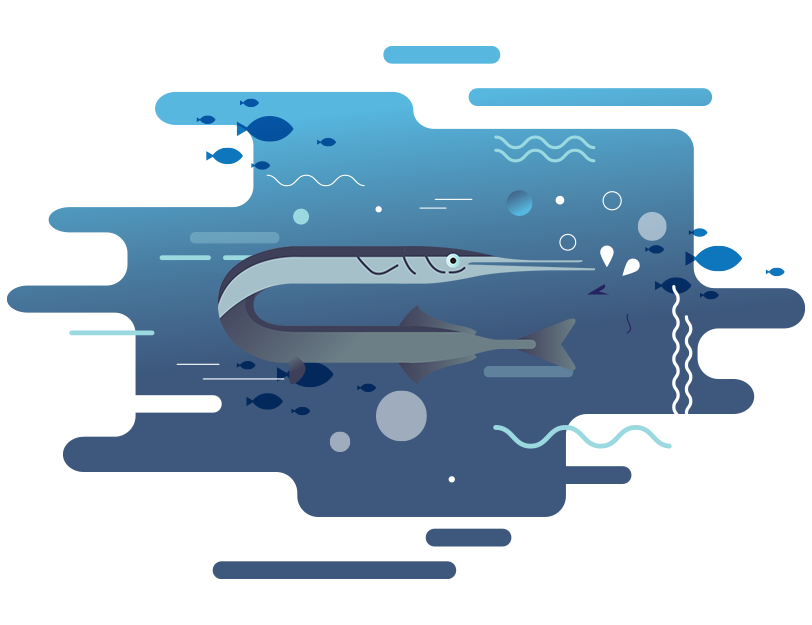
It can be found in the shallow coastal waters of the southern Baltic Sea, in the north it appears sporadically. It is a predator that hunts close to the water surface.
It has a strongly elongated, arrow-shaped body, an elongated head with a beak-shaped mouth.
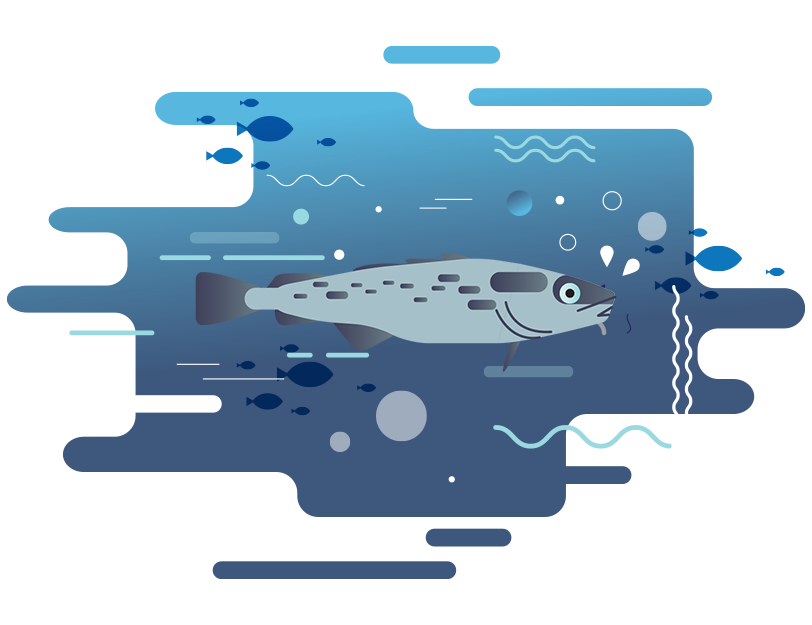
The most popular fish in the Baltic Sea, of great economic importance, but unfortunately its catches are systematically limited. It is found in areas between the Danish Straits to the Gulf of Bothnia.
Young cod live in shallow coastal waters while adults live in the open sea, usually at a depth of 220m. The body of cod is elongated, covered with small and round scales.
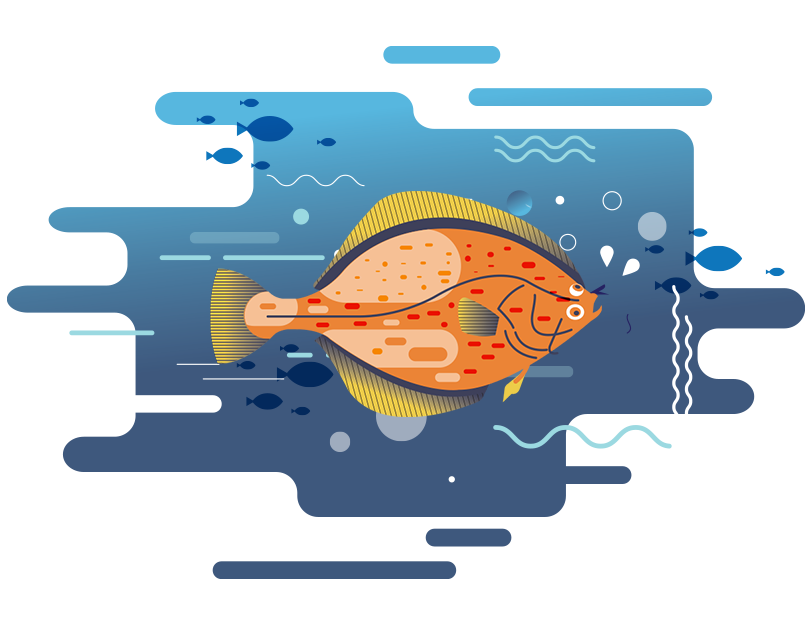
Extremely popular in menus at the Polish seaside. Flounder is a fish with asymmetrical body structure. Most of the time it rests on the seabed, buried in the mud, lying on its side.
It also moves in this position, causing one of its eyes to move to the opposite side of its head, usually to the right.
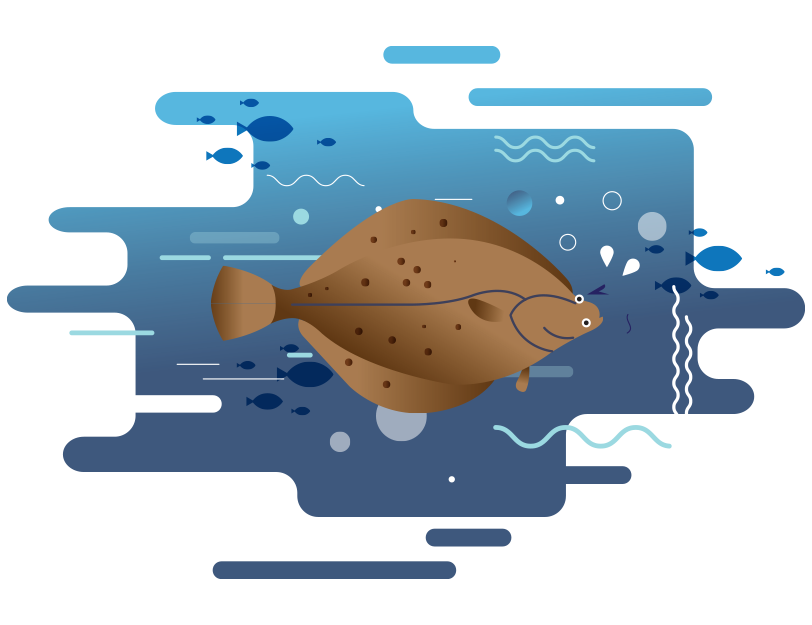
Along with flounder and turbot, it is one of the common Baltic flatfish. It is found mainly in the western and central parts of the sea, where the salinity is relatively high.
Young individuals are most likely to be found on sandy or clay bottoms in the coastal zone, adults prefer moderately deep waters.
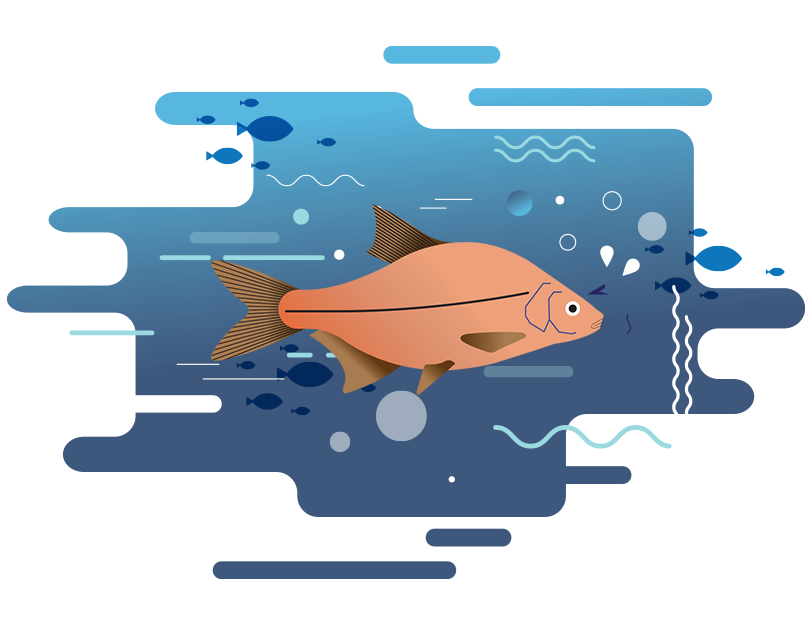
In Poland it is common in large lakes and lowland rivers, as well as in the coastal zone of the Baltic Sea. It reaches about 6 kg of body mass and up to 80 cm of length, on average 30-50 cm.
The body is significantly laterally ridged, covered with large, easily removable scales.
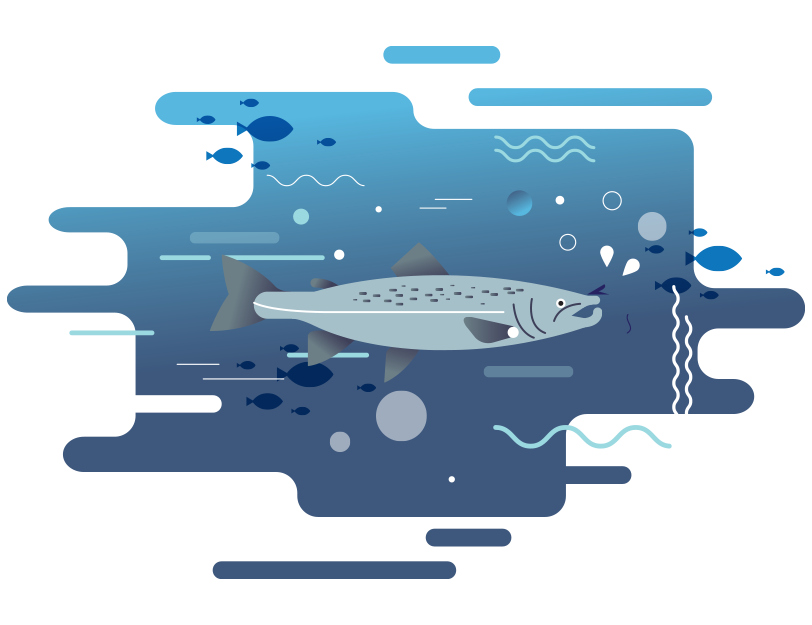
One of the most sought after fish species. Salmon is a predatory, bi-environmental (anadromous) fish. It lives in clear waters with swift currents.
The spawning takes place in rivers, where the young remain from one to three years.
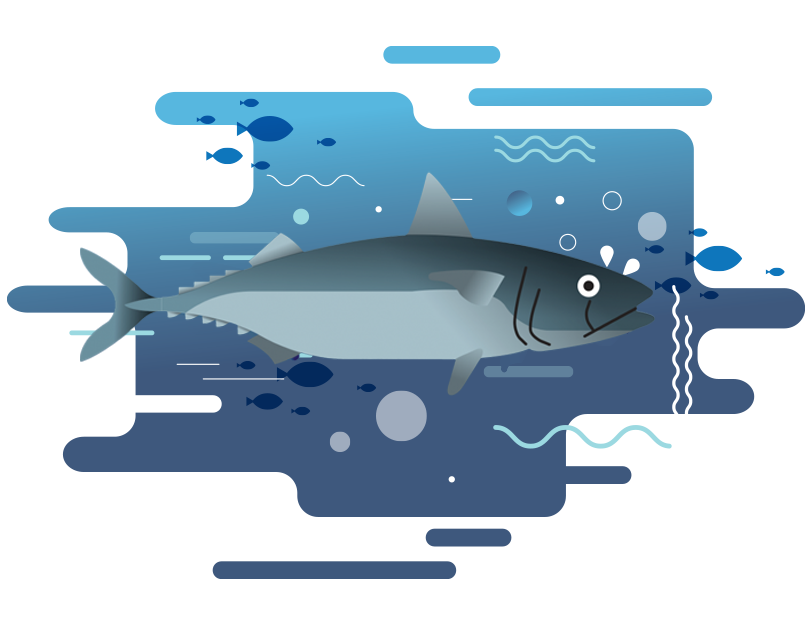
The occurrence of mackerel in the Baltic is highly variable, as it depends on inflows from the North Sea. It is a migratory fish, sometimes gathering in large shoals.
It appears in our parts of the sea after spawning and leaves before winter. It is a pelagic species, living in the open sea.

It is found in lakes, rivers and in shallow coastal waters of the Baltic Sea. Perch reaches length of 25-30 cm, slightly over 50 cm at most, and weight of about 2 kg. The body is more or less ridged, which depends on trophic conditions, i.e. the abundance of nutrients in the ecosystem. It has small scales, firmly embedded in the skin. The coloration varies - perches living in shallow overexposed waters are more brightly colored. They have 5-9 transverse dark streaks on their back and sides. At night they sink to the bottom in a kind of deep sleep, leaning against the bottom with their ventral and caudal fins.
Perch has white, tasty and firm meat, with few bones. The larger it is, the tastier it is. It is suitable for frying, boiling and roasting.
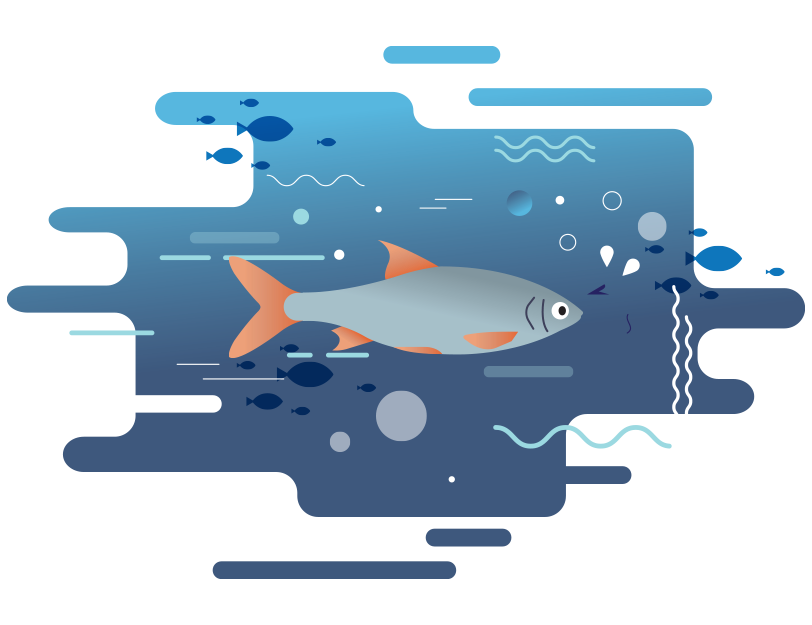
In Poland it is found in rivers, lakes and ponds, as well as in the coastal waters of the Baltic Sea.
It has a short body, laterally compressed, not tall, 20-35 cm long, maximum 44 cm, and weighs 2 kg.
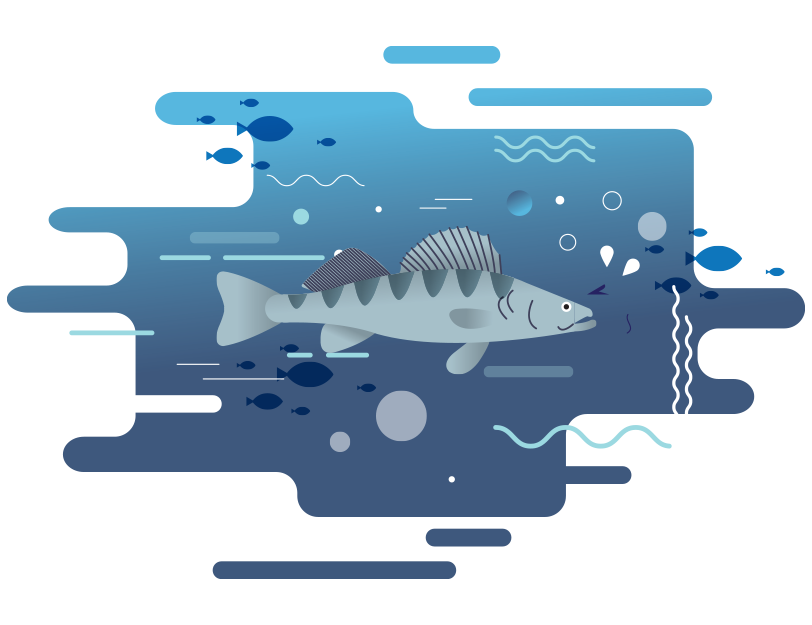
Found in lakes, lowland rivers and in the shallow coastal waters of the Baltic Sea. Prefers deep, cloudy waters with a muddy bottom.
a
Body elongated, slightly laterally flattened, head relatively small, mouth strongly toothed. Eyes large, iridescent, glowing in the dark.
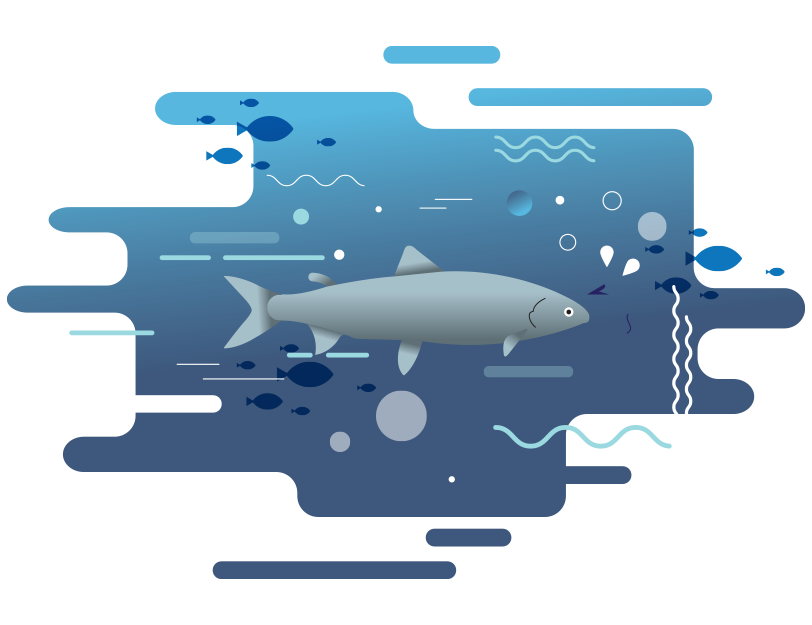
Body herring-like, depending on the local species more or less slender. It has a small head, with a pointed, often even stretched out nose-shaped snout.
Sides and belly are white or silvery shiny, back is steel blue.
It is found in brackish coastal waters. It grows up to 50-60 cm. Some individuals reach 100 cm in length and weigh up to 6 kg.
It can be preserved, e.g. in barrels, like herring.
White meat of vendace is delicate, tasty and highly valued. In Sweden vendace caviar, Kalix Löjrom, is a very exclusive product. Vendace is usually eaten smoked, also fried, in an oil marinade with onions or raw, for example, as tartare.
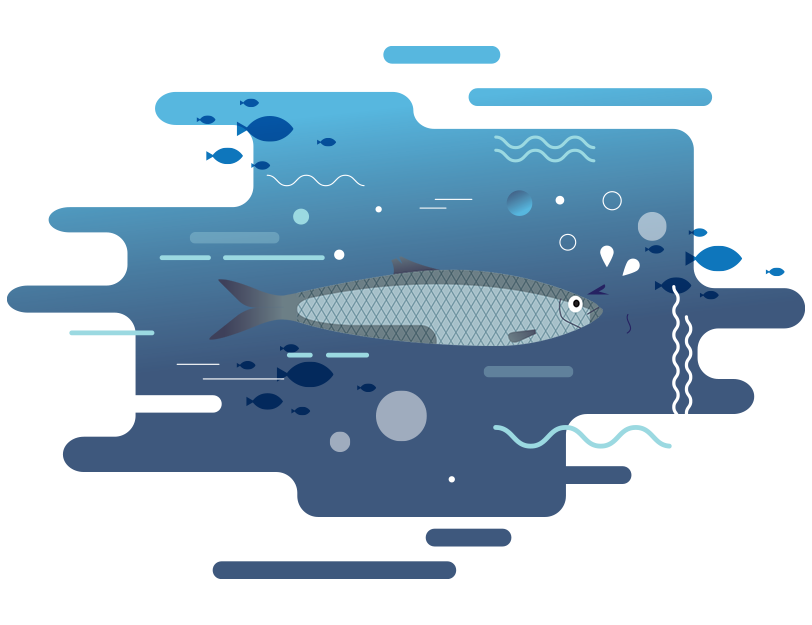
Achieves a length of 18-24 cm. One of the most important species for sea fisheries.
The meat of herring is soft, oily, has a distinctive flavour, quite bony. Popular in Polish cuisine "since forever" due to the ease of storage after salting. It tastes great fried as well as smoked.
Appears sporadically in the western Baltic Sea. The sole is characterized by a flat, oval body shape with small eyes on the right side of the body. It grows up to 70 cm in length, reaching a maximum weight of 3 kg. It can live up to 23 years. Dorsal side is gray to blackish brown with irregular light spots. It feeds at night, eating invertebrates and sometimes small fish. The Polish trade name - "sola lemon" - comes from the English name "lemon sole".
It belongs to the most noble of fish with very delicate taste. Its meat is white, lean, firm, easily separated from bones. It can be fried, baked in an oven, wrapped in foil or grilled.
In Poland it is found in the Szczecin Lagoon, the Gulf of Gdansk and the Vistula Lagoon, as well as deeper lakes in the north of the country. The body is spindly, up to 30 cm long, covered with large, transparent scales. The coloration is variable, depending on the color of the water, the back is darker, and the sides are silvery. In appearance, smelt resembles sprat, but its meat is whiter and firmer.
It is popular in Masurian cuisine, for example as a snack - so called fish chips. The meat of smelt has a characteristic smell of fresh cucumber. They are used to make canned fish and to extract fish oil.
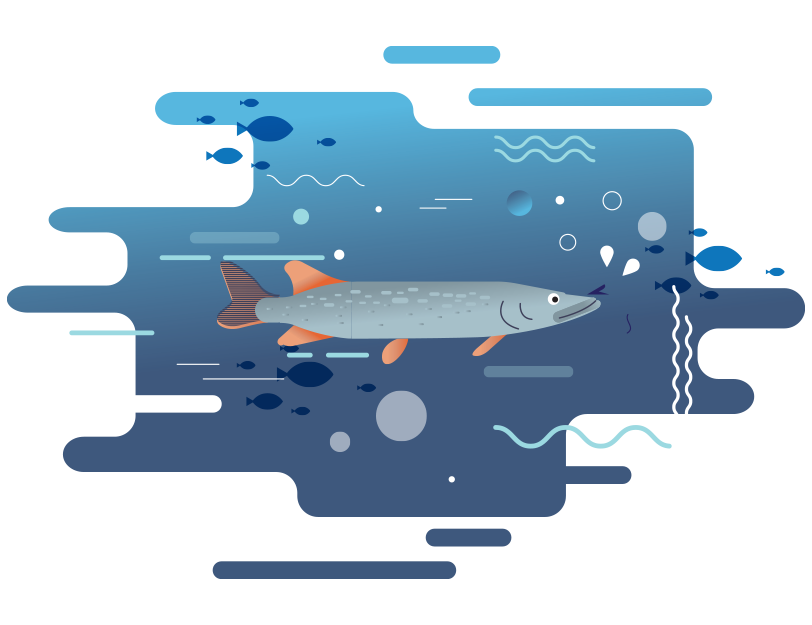
It is a freshwater fish, a predator. In the Baltic Sea it can be found near river mouths. It reaches a length of 150 cm and weight of about 10 kg.
The body of a pike is flattened, streamlined. The scales are quite small, oval, firmly embedded in the skin
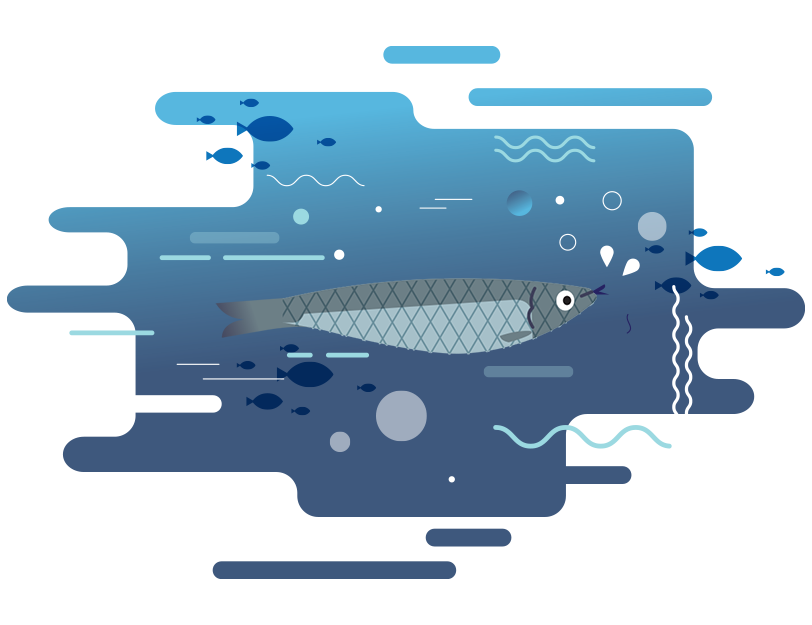
A small fish from the herring family, in the Baltic Sea it reaches 10-14 cm, in the North Sea it grows up to 17 cm.
The body of the sprat is covered with silver scales, bluish on the back, the head has no scales, the gill covers are smooth, the eyes have narrow fat eyelids.
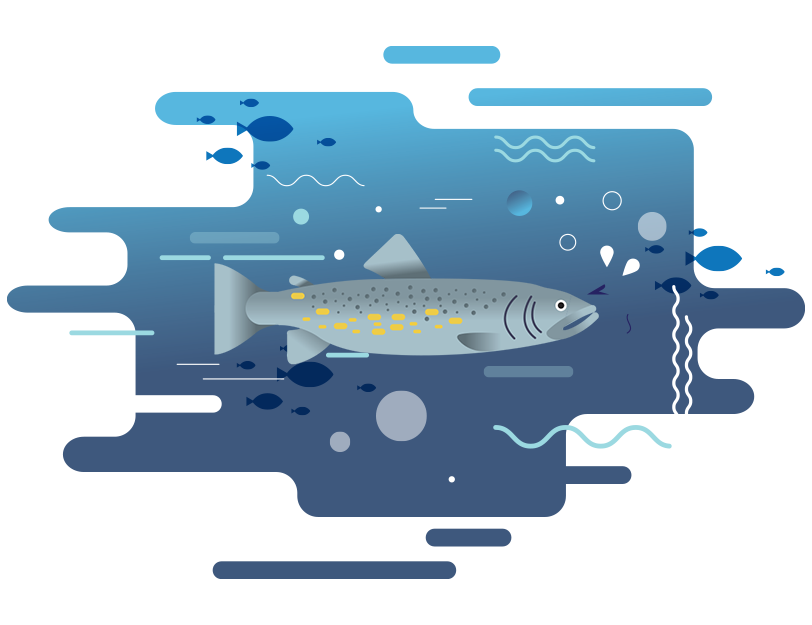
It is a salmonid, migratory fish. It reproduces in rivers, after two years the juveniles (smolts) migrate to the Baltic Sea.
It reaches a length of up to 100 cm, weight up to 12 kg. The body of the sea trout is more massive than that of salmon, the head is larger, the shaft of the tail is shorter, wider, more flattened.
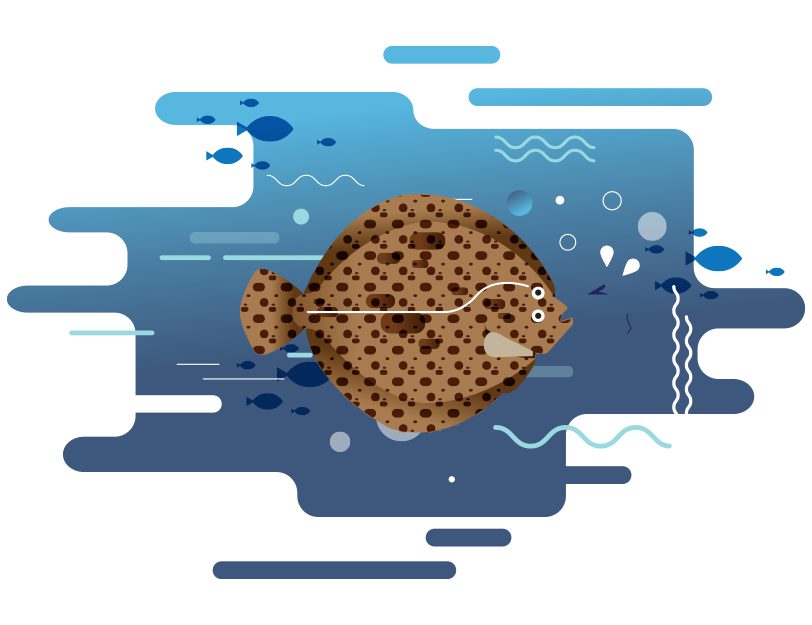
It is found mainly in the Polish part of the Baltic Sea. It swims on the side, close to the bottom.
The body of this fish is strongly laterally flattened, very tall, almost circular, and covered with hard bony nodules that occur on the ocular (i.e. left) side. This side is gray to dark brown, covered with numerous black dots.
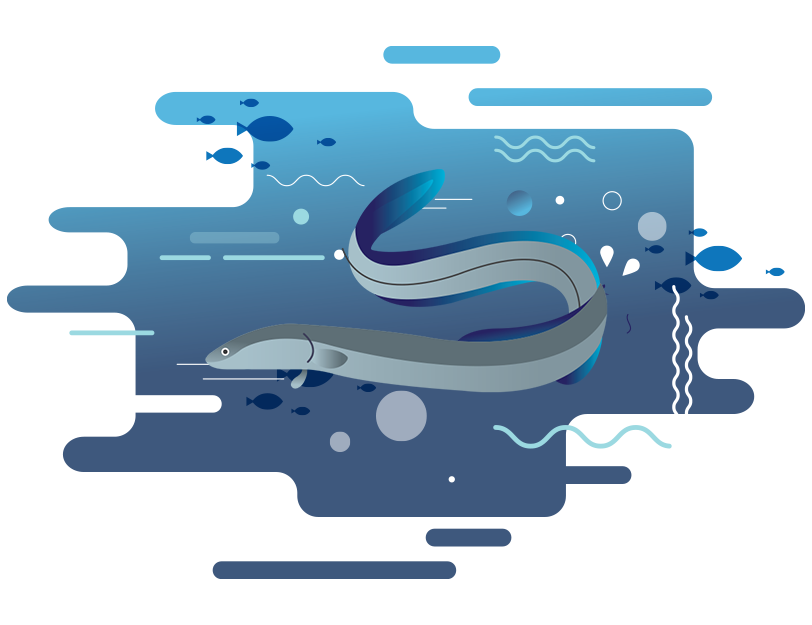
Eels live a very long time, sometimes over 60 years! All European eels breed in the same place in the world - in the Sargasso Sea, at a depth of about 1000 m.
The young, with the help of the Gulf Stream, return to Europe when they are about 3 years old.